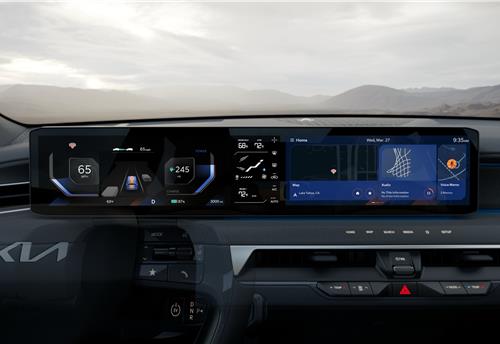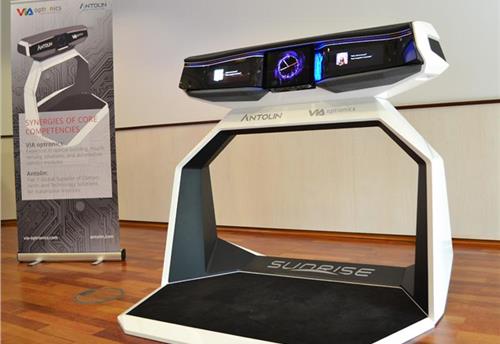Toshiba unveils latest SoC for ADAS and autonomous vehicles
Toshiba will continue to enhance the power efficiency and processing speed of the developed SoC and will start sample shipments of ‘Visconti 5’, the next generation of Toshiba’s image-recognition processor.
Toshiba Electronic Devices and Storage Corporation (‘Toshiba’) has developed an image recognition SoC (System on Chip) for automotive applications that implements deep learning accelerator at 10 times the speed and 4 times the power efficiency of Toshiba’s previous product.
Advanced driver assistance systems (ADAS), such as autonomous emergency braking, offer increasingly advanced capabilities, and implementing them requires image recognition SoC that can recognise road traffic signs and road situations at high speed with low power consumption.

Toshiba: DNN Accelerator
Deep neural networks (DNN), algorithms modeled after the neural networks of the brain, perform recognition processing much more accurately than conventional pattern recognition and machine learning, and are widely expected to find utilization in automotive applications. However, DNN-based image recognition with conventional processors takes time, as it relies on a huge number of multiply-accumulate (MAC) calculations. DNN with conventional high-speed processors also consumes too much power. Toshiba has overcome this with a DNN accelerator that implements deep learning in hardware. It has three features.
- Parallel MAC units. DNN processing requires many MAC computations. Toshiba’s new device has four processors, each with 256 MAC units. This boosts DNN processing speed.
- Reduced DRAM access. Conventional SoC have no local memory to keep temporal data close to the DNN execution unit and consume a lot of power accessing local memory. Power is also consumed loading the weight data, used for the MAC calculations. In Toshiba’s new device, SRAM are implemented close to the DNN execution unit, and DNN processing is divided into sub-processing blocks to keep temporal data in the SRAM, reducing DRAM access. Additionally, Toshiba has added a decompression unit to the accelerator. Weight data, compressed and stored in DRAM in advance, are loaded through the decompression unit. This reduces the power consumption involved in loading weight data from DRAM.
- Reduced SRAM access. Conventional deep learning needs to access SRAM after processing each layer of DNN, which consumes too much power. The accelerator has a pipelined layer structure in the DNN execution unit of DNN, allowing a series of DNN calculations to be executed by one SRAM access.
The new SoC is said to comply with ISO26262, the global standard for functional safety for automotive applications.
Toshiba will continue to enhance the power efficiency and processing speed of the developed SoC and will start sample shipments of ‘Visconti 5’, the next generation of Toshiba’s image-recognition processor, in September this year.

RELATED ARTICLES
Marelli Talbros Chassis Systems wins Rs 1,000 crore business from European OEM
The order, to be executed over an eight-year period, is for the supply suspension arms tailored for both conventional in...
Kia launches customised NBA display themes for North American market
Display Themes is a customised service that supports a personalised vehicle experience, allowing users to customise the ...
Antolin and VIA Optronics unveil versatile vehicle cockpit concept
The Sunrise vehicle concept cockpit, which is engineered for seamless transitions between manual and autonomous driving ...





 By Autocar Pro News Desk
By Autocar Pro News Desk
 26 Feb 2019
26 Feb 2019
 11216 Views
11216 Views









